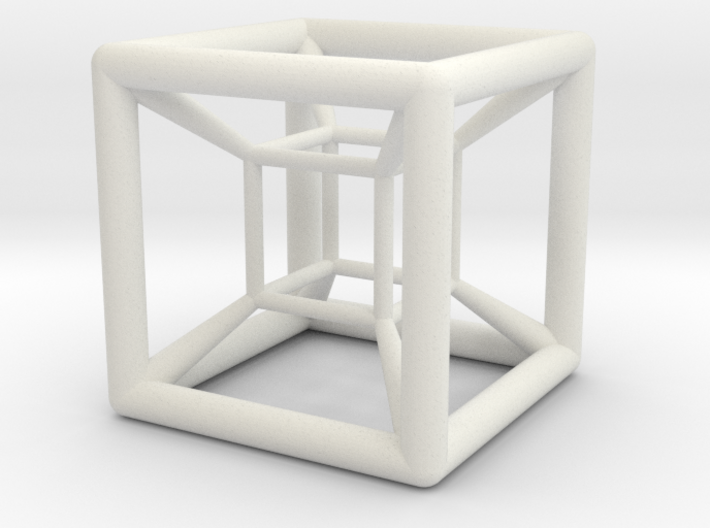

Just like a projection of a 3D object onto a 2D space creates a 2D object, a projection of a 4D object onto a 3D space forms a 3D object. This next sentence requires a leap of faith. By having some understanding of how the projected object is constructed we can at least attempt to see through those flaws. The important point here is that a projection that creates a shadow introduces some distortions into the final image. In some orientations it looks as if one of the faces encompassed all the others even though all faces are the same.Intersections may appear between the edges, but in the cube the edges don’t intersect with each other, they just meet at the corners.Perfectly square faces of the cube are often deformed into quadrilaterals.A 3D cube projected onto a 2D space creates a 2D image.There are many interesting observations to be done here: You can choose to highlight one of the faces using the control underneath: The right side represents the direct view of the xy plane. The light source is symbolized with a yellow dot on the far left side. In the simulation below you can rotate the cube on the left side to see how its shadow changes. Let’s look at the relation between a plain 3D cube with semitransparent walls and its shadow. In fact, shadow casting is one of the ways of reducing the dimensionality of a space. If you’ve ever played with shadows cast by the Sun or a flashlight, you may have noticed that they don’t really preserve the depth – they flatten three dimensional objects into two dimensional figures. However, not all is lost! I’ll show you some ways to remove one dimension from a 4D space and we’ll be able to use our perfectly 3D-capable brains to look at a tesseract from a different perspective. We can try to understand how things work in 4D, but I don’t think we can fully experience it. Our human brains are hardwired to understand things in three dimensions – reasoning about the fourth one requires some amount of imagination or even delusion.

Unfortunately, I don’t think I can do a better job of showing all four dimensions at once. I personally find it quite difficult to see what’s going on with this form of presentation.


 0 kommentar(er)
0 kommentar(er)
